Proper care of the garden and vegetable garden in the fall by months
The time after harvest in late August - early September is important for the gardener. During the period, garden trees and flowers are prepared for wintering, plantings are fertilized with nutrients. If you do not perform certain actions before the onset of the first cold weather, you can be left without a good harvest. To do this, you need to know how to properly care for the garden in the fall.
Content:
- Autumn work on the site
- September - where to start?
- What to do in October?
- November - preparing the garden for winter
Autumn work on the site
In order for the growth on the trees to grow with dignity, and the soil for planting to be fertile, you need to do several things. Activities are carried out after harvest, when the last foliage has flown. Now the plant begins to prepare for retirement.
List of things to do in the autumn garden:
- Remove at the base of the trees. The soil is cleaned under the fruit plants. There should be clean soil under the branches, it is required to remove all fallen leaves and fruits that could not stay on the branches.
- From fruits, you can make compote or jam, prepare drying. The foliage is not left because a variety of parasitic insects settle in it for the winter. The latter, crawling onto the bark, suck the nutritious juices from the tree. The main thing is to remove all battered fruits and berries with scab or powdery mildew... In a rainy, cold summer, many fruits are lost precisely because of these diseases. When combined with healthy berries, they will infect the rest of the crop.
- Held pruning fruit crops. Removal of unnecessary overgrowth is carried out not only in spring, but also in autumn before the onset of cold weather. This procedure is carried out approximately 3 weeks before the first frost. This is due to the fact that the plant must heal the resulting wounds. Broken, damaged, withered and diseased tree branches are subject to pruning. It is also at this moment that you can carry out the planned removal of unnecessary branches to form the crown of a young seedling. If the removal of excess branches is carried out on time, then next year you can expect a rich harvest and good young growth.
- It is required to loosen the ground near the trunk. Such a procedure is necessary so that pests that have hibernated in the ground are dug out. Near root system it is necessary to carry out shallow loosening, due to the fact that the roots can be damaged. They dig up the soil to a depth of 20 cm.
- Disinfect the soil. After the soil has been dug up and all kinds of pests have appeared on the surface, it is required to disinfect the soil substrate. The event will help not only get rid of pests, but also protect the plant from diseases.
- It is necessary to feed with micronutrients. Before applying fertilizers, it is necessary to saturate the root system with moisture. In the autumn, only fertilizers saturated with potassium and phosphorus need to be applied. Do not fertilize with nitrogen. It provokes the active growth of branches, which postpones the moment of departure for the winter. It can cost a plant life. In addition, they fertilize wood ash... But before making any top dressing, they must dig up the soil.
- Cultivate planting strawberry... At the end of August, you need to cut off the strawberry bushes.It is necessary to remove the lower dried and old leaves, as well as greenery, beaten by diseases and pests. Eliminate mustaches that are not needed for reproduction. If the mustache is necessary for breeding a certain variety, then it is recommended to attach it to the ground with a hairpin or other device and lightly sprinkle it with earth. As soon as it is noticeable that the plant has taken root of its own, the connection with the mother shrub must be cut off. Leaving the connection with the mother plant for the winter, the young bush will not release roots for independent growth. He, on the contrary, will feed on the mother, thereby depleting the bush. A crop cut in time for the next year will give a good harvest.
- Sow siderates... In the vacated beds, experienced gardeners recommend planting crops that enrich the land with useful microelements. Of these plants, there are - phacelia, mustard, rye or wheat. Such plantings sprout quickly, but they will not be able to bloom. By the middle of autumn, they can already be mowed and dug up together with the roots. Shrubs, both during growth and after digging, enrich it with useful microelements and vitamins in the process of rotting in the soil. After such organic fertilization, any crop yields bountiful yields. In addition, this kind of feeding perfectly repels pests. potatoes and tomato - Colorado potato beetle.
- Prepare plants for winter. Many trees do not tolerate low temperatures. They need to be intensively prepared for wintering. It is enough to cover some crops with spruce branches, while others need to be thoroughly insulated so that they do not freeze out during the winter months.
Thus, gardening during the fall months is intense and important. Fruitful labor has a beneficial effect on the life of trees and plants. The measures taken on time allow you to get a larger harvest than in the previous year.
September - where to start?
September is a very important month for any gardener. It is rich in urgent matters of cleaning gardens, vegetable gardens and fields. The main occupation is
- Fruit picking, namely pears and apples. The right time is the key to long-term storage of the fruit. To determine the readiness of apples, you need to do a little experiment. Pick an apple that looks ripe. Cut it in half with a knife, if there are white or slightly brown seeds in it, then the fruit is left on the branch. The recommended harvest time is the middle of the first month of autumn. If you stretch out with the collection, then the delay will also negatively affect the fruits, as well as early harvesting. The fruits will overripe and you should not think about their long-term storage.
- In the garden, autumn time is the moment for planting fruit crops such as apricots, peaches, apple trees, pears, you can plant grapes and currant of all kinds. Cuttings from currants take root well before winter, gooseberry and grapes. The rooted young plants will be ready to plant in the spring months.
- All shrubs and trees must be pruned. Dry, broken and diseased vines are removed. After that, it is imperative to spray crops from pests and diseases.
- Do not delay with the last harvest of vegetable fruits. They will no longer be able to ripen, and green tomatoes can still be canned or salted. Also, do not leave potato planting. The first frosts will negatively affect the remaining tubers.
- September is the ideal time to prepare planting material for growing winter crops and planting seeds in polycarbonate greenhouses or greenhouses. You can also plant cloves of garlic now, then they will give a good increase already in the first days of spring.
- Those who are engaged in flower cultivation in September are very busy. They collect seeds, as well as plant bulbs. tulips, daffodils etc.
What to do in October?
October is marked by the fact that at this time it is recommended:
- Transplant shrubs and trees to a new place of residence.But before starting work, they wait until the plant completely discards all the foliage.
- You should also take care of the fruits of the late harvest. They are checked, like the September fruits, so that they do not have time to overripe. Many varieties are ripened.
- The next stage is top dressing, simultaneously with loosening and processing of the soil.
- Do not forget about planting siderates. The best planting time is early October for the southern regions. For the central regions of Russia and the northern districts, spring crops no longer need to be planted, they will not have time to grow. It's time to plant rye and winter wheat. Until sub-zero temperatures come, these crops will have time to rise well, which means they have every chance to winter well. If the siderates were planted earlier, then October is the time when they can be dug up. Then they will have time to overheat well over the winter and saturate the soil with organic matter.
- In areas with high acidity, you need to reduce this indicator, because not all plants can grow and develop fruitfully in such conditions. For these purposes, liming is carried out on the breasts, scattering lime or chalk.
- Florists continue to plant bulbs. At the first drops in air degrees, tubers are to be planted in the ground hyacinths.
- After the first frost appears, the tubers are carefully uprooted. dahlia, gladioli, begonias and freesias with anemones... They are stored in a cool place. After a negative temperature is established, hyacinths and lilies are covered with peat, moss, sawdust or pine spruce branches.
November - preparing the garden for winter
The last month of autumn requires the last effort before wintering. The southern regions have a mild climate, so most plants are not sheltered. But, this does not apply to all grape varieties, some should be insulated. The vine is removed from the trellises or supports, laid out on wooden pallets or in dug trenches in the soil. After that, the vine is wrapped with a film or earth.
If the trees do not need insulation, they should be whitewashed with lime. It is necessary not only to protect against rodents, but also from the bright spring sun rays. They can cause burns and cracks in the bark. Also, whitewashing plays the role of a kind of protection from the effects of the sun. On warm winter days, the rays tend to warm up the bark, and in the evening the temperature drops, provoking freezing of the tree shell. What can cause the death of seedlings.
In colder regions, fruit trees need to be insulated with spruce branches or peat, and from above, wrap the trunk with burlap or other air-permeable material.
From above it is recommended to wrap it in a circle with a netting. She will not allow rodents to feast on the bark in the winter cold. Do not use film or other non-woven material for wrapping. It does not allow air to circulate, which provokes the drying out of the bark. As a result, various fungal diseases develop. In the garden during this period, you can plant any vegetable crops. Low temperatures will prevent the seedlings from growing, but they will go through a natural process of stratification. This will allow the sprouts to gain immunity and get sick less in the future.
The work with flowers is coming to an end. Perennial plants are cut for the winter under the base. Roses cut to such a level that they can be covered. Bulbous plants are covered with spruce branches, moss or sawdust.
There is a complete completion of all work. The last days have been set aside for cleaning up all the affairs and complete shelter of all trees for the winter. Thus, the autumn months are no less busy period for farmers than spring or summer. The main thing is to prepare a garden and a vegetable garden for the coming winter and the future fruiting period. If you do not follow the basic procedures for rich fruiting, you can not wait.
More information can be found in the video:



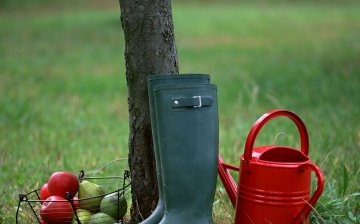
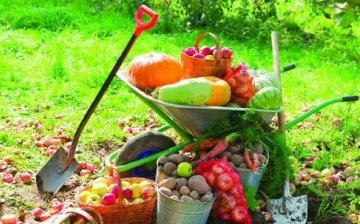
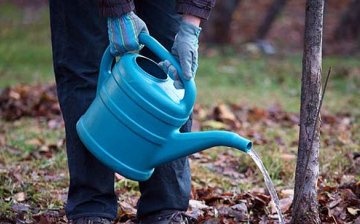
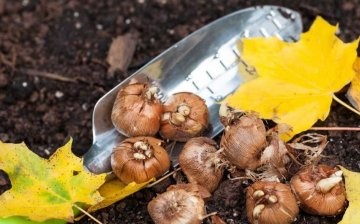
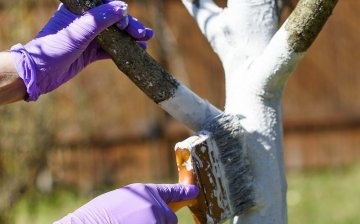





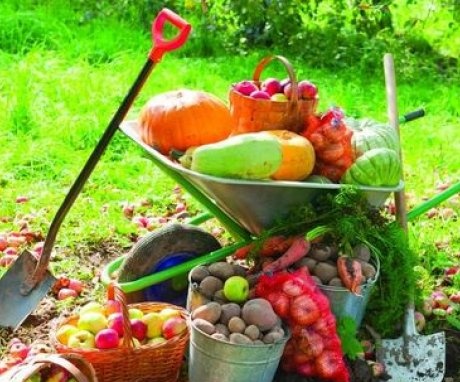
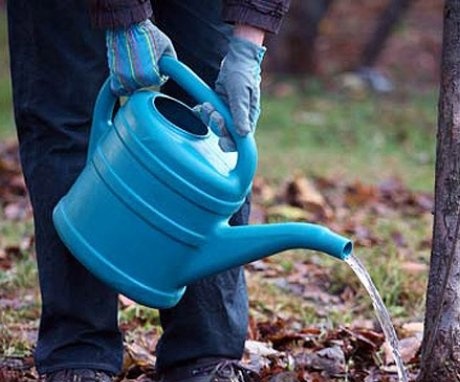
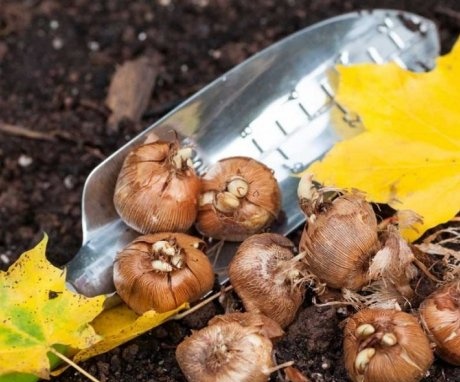
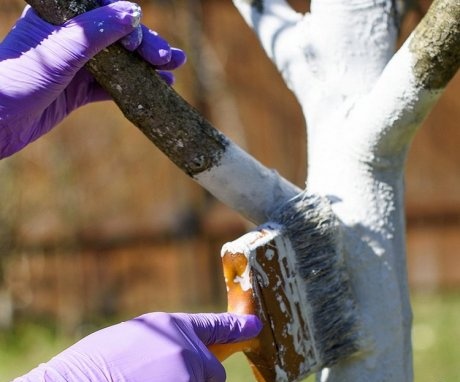
I love autumn cleaning in the garden, so that before winter there is an ideal order on the site, so that everything unnecessary is removed, trees and bushes are cut off, there are no fallen leaves, no dried grass, and the flowers are sheltered from the upcoming cold weather.
And I love autumn for harvesting) Apples, plums, pears ... how you want to eat them). Necessarily different compotes, jam, something to dry, vitamins for the winter. And then you can clean up the garden, prepare for hibernation).
Autumn is good both for harvesting and for harvesting and for harvesting - it is always nice to take stock of the season and rejoice at the success achieved in growing new varieties and plan work for the next season.